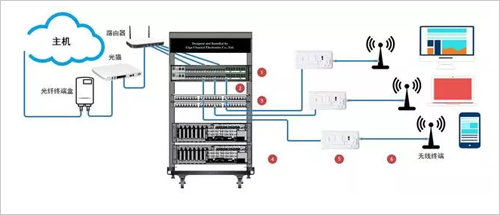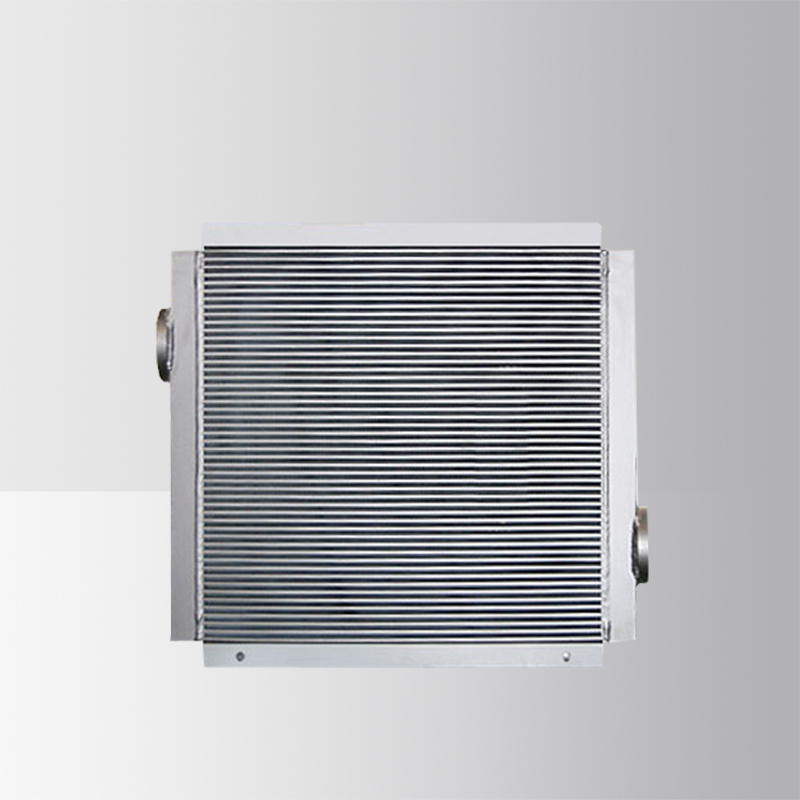The choice of network cable in the integrated wiring system is very important. Is the network cable selection the same in computer networks and video surveillance systems? When do you use Gigabit Ethernet cable and when do you want a 100M network cable?
In the era of Internet information communication, people's dependence on the network is becoming more and more serious. The speed of the network directly affects our daily life. Do you know that the network cable is also divided into different rates? For example, 100M network cable, Gigabit network cable. Then, in what kind of scenario, the 100 Mbps network cable is used, and in what kind of scenario, the Gigabit network cable is used. This article will explain in detail.
How to distinguish between Gigabit network cable and 100M network cable
Gigabit network cables and 100 megabit network cables are generally distinguished by the specification or parameters of the network cable.
(1) Gigabit network cable
In general, the transmission rate of Cat6 Category 6 cable is 1000 Mbps, while the transmission rate of Cat6a Category 6 and above is more than 10 Gbps. Therefore, the Cat6 Category 6 cable is called Gigabit cable.
(2) 100M network cable
Usually, the main transmission rate of Cat5e Super Category 5 cable is between 100 Mbps and 1000 Mbps. It can also be used for Gigabit transmission under certain conditions, but the effect is not good. The main transmission rate of Cat5 Category 5 cable is 100 Mbps, so Cat5e will be used. The Super Category 5 network cable and the Cat5 Category 5 network cable are called 100M network cables.
But in fact, we need to know that the cable specification guarantees the electrical transmission performance, not the network speed. The actual network speed is not only related to the network cable, but also has a great relationship with the terminal equipment.
How to choose Gigabit network cable and 100M network cable
Faced with different network transmission requirements, Gigabit Ethernet and 100M Ethernet cables can play different roles. When the required transmission rate is mainly 1000 Mbps, the Gigabit network cable is used; when the required maximum transmission rate does not exceed 1000 Mbps, the 100M network cable can be used. The following shows the related cases of Gigabit Ethernet and 100M Ethernet:
(1) Cat6 Category 6 Gigabit Cable – Horizontal Cabling Solution
When you need to carry out horizontal cabling of Gigabit networks, you can choose Cat6 Category 6 unshielded (UTP) Ethernet Gigabit Ethernet cable with card slot protection design and RJ45 connector for stable transmission of Gigabit network. As shown below:

(2) Cat5e super five types of 100M network cable – Ethernet fiber optic transceiver wiring scheme
The Cat5e Super Category 5 unshielded (UTP) card slot 100 Mbps cable is designed for connection to Ethernet media transceivers and Ethernet switches. As shown below:

Can Gigabit and Baiwei cable be universal?
In the 100M network, the Cat5 Category 5 100M network cable uses only 4 cores in the process of transmitting network signals. In the Gigabit network, the Cat6 Category 6 network cable uses 8 cores in the transmission network signal. The four cores of the Cat5 Category 5 network cable can not transmit and receive at the same time as the Gigabit network transmission, that is, the four cores can only realize the Gigabit network to receive data or send data. The two cannot be simultaneously performed, but the specifications of the network port are the same. Therefore, the Cat5 Category 5 100M cable and the Cat6 Category 6 Gigabit cable cannot be fully versatile.
The Cat5 Category 5 network cable has not been adopted any more. Today, the 100M network cable mainly refers to the Cat5e Super Category 5 network cable. The Cat5e Super Category 5 network cable is the same as the Cat6 Category 6 network cable. It is an 8-core twisted pair cable. Therefore, Cat6 Category 6 can be used. The network cable can be used for 100-megabit transmission. It can also be used for Gigabit transmission under certain conditions by Cat5e super five network cable. It can be used universally.
However, it is worth noting that the Gigabit cable crystal head and the 100M cable crystal head are not universal. Their copper cores are different in size, so the size of the internal holes is also different.
to sum up
In fact, we can see from the above that the Gigabit Ethernet cable and the 100M Ethernet cable are a relatively rough division. If you really want to subdivide, you need to divide it with Cat5, Cat5e, Cat6, Cat6a, etc., and then according to the parameters. Analysis and purchase.
The air compressor is a mechanical device that compresses the volume of the gas and increases the pressure of the gas and delivers the gas. It can reduce the volume of the gas, increase the pressure, and have a certain kinetic energy, which can be used as mechanical power or other purposes.
Since the compressed high-temperature gas and high-temperature oil play the role of transmission power and power source in the air compressor, for the safe and benign operation of the air compressor, high-efficiency heat dissipation of the high-temperature gas and oil is required plate-fin heat exchange. It is widely used in air compressors with the advantages of high pressure resistance and large heat dissipation power per unit volume. We offer standard coolers or special custom cooler solutions for current different cubic air compressors, ensuring that the air compressors work long hours.
1. Blowing air: tire filling, blow molding, blowing, blowing, food filling, etc.
2. Control instrument: machining center, machine tool, printing machine, power plant auxiliary equipment control, train brake, rail change and change device, vehicle door and window opening and closing, control valve, instrument power, etc.
3. Drive equipment: air guns, nail guns, robots, pneumatic drills, pneumatic picks, etc.
4. Surface spraying: metal surface sandblasting, surface painting, etc.
5. Dust transportation: coal powder transportation in power plant smelting plant, dust transportation in cement plant, etc.
6. Pressurization: metal casting, forging, etc.
7. Chemical reactions: Chemical reactions in chemical plants, oxygen production, nitrogen production, etc.
8. Purging: power plant pipeline cleaning, smelting plant, mechanical processing plant iron filings, dust cleaning, workbench cleaning and other ventilation, tunnels, mine ventilation.
9. Aircraft manufacturing: spray washing machine, demoulding, driving assembly tools, drilling rigs, steam hammers, lifting hoists, combination knives, reamer, rivet guns, screwdrivers, forging hammers, metal forming presses, sand blasting, painting.
10. Spraying machine: spray washing machine, driving assembly tool, lifting hoist, pneumatic control, forging workshop, sheet metal workshop.
11. Beverage factory: bottle washing machine, canning machine, internal spraying of wine barrels, gas for food industry.
12. Cement manufacturing: storage ventilation, cement slurry mixing, cement bag cleaning and sealing, raw material mixing, dump truck, cleaning equipment, clinker cooling, conveying cement and coal, cement kiln cleaning, vehicle loading and unloading, lifting and lifting devices, pneumatic control.
13. Thermal power plants: blowing air to clean pipes, blowing off soot, clear boiler and condenser pipes, jet cleaning, conveying coal powder, removing muddy water, and pneumatic control.
14. Hydropower plants: engine control, ship lock maintenance, drive controller, drive lubrication pump, drive ship lock, start control, cleaning garbage net.
15. Food industry (general application): stirring liquid, fermentation tank gas (oxygen), nozzle cleaning equipment, clear container with nozzle, conveying raw materials, food dehydration, filtration.
16. Forging workshop: blowing oxide scale, furnace door air curtain, lifting hoist and lift, driving bending and straightening machine, driving clutch brake and clamping device, driving forging hammer and driving oil burner.
17. Foundry workshop: hot metal positioning, cleaning equipment, conveying sand, driving pneumatic tools, sanding machine, grinder, lifting hoist and lift, pneumatic pick, steel brush, sandblasting, sand screening, spray core.
In summary, the industries used for compressed air include machinery, automotive, electronics, electric power, metallurgy, mining, construction, building materials, petroleum, chemical, petrochemical, textile, environmental protection, military and other industrial and civil production and life. each field.

Compressor Heat Exchanger
Compressor Heat Exchanger,Fireplace Heat Exchanger,Heat Exchanger For Air Compressor,Air Compressor Heat Exchanger
Xinxiang Zhenhua Radiator Co., Ltd. , https://www.thermal-manage.com


